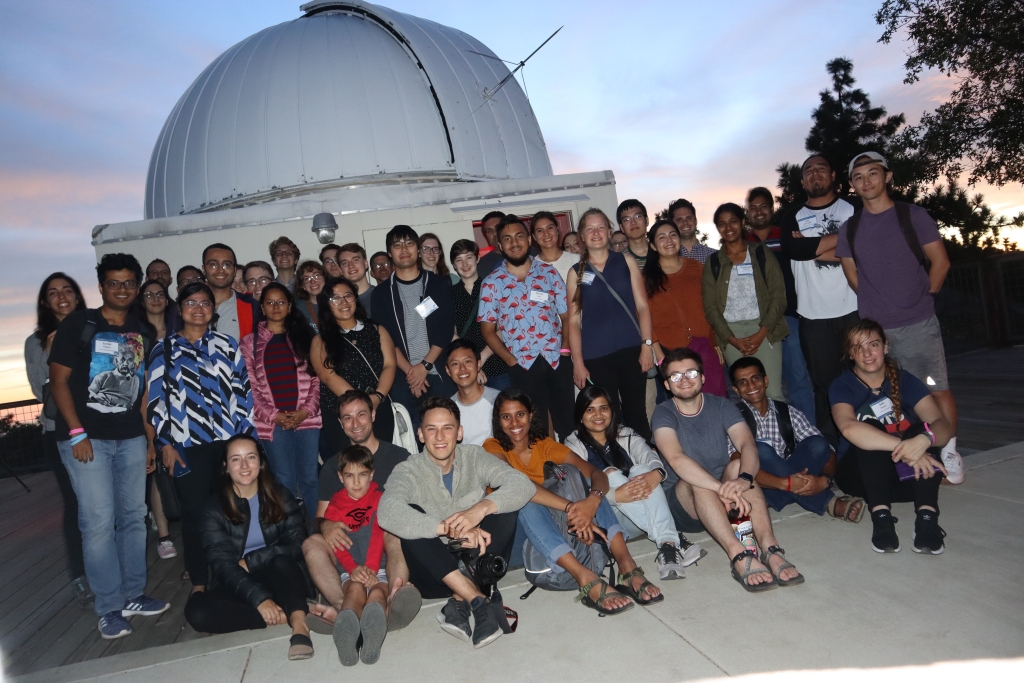Two large international teams of astronomers joined forces to search for collisions between a neutron star and a black hole.
Mansi M. Kasliwal, the Principal Investigator of the Global Relay of Observatories Watching Transients Happen (GROWTH) collaboration, shares her enthusiasm about the future of multi- messenger astrophysics.
The GROWTH SURF program enables undergraduate students to travel to an international partner institution and conduct a summer research project in the area of time-domain astronomy and multi-messenger astrophysics. This video captures the impressions of the participants in 2019 upon their return home.
WatchView recordings of the lectures during the 2018 GROWTH astronomy school. The school is focused on training graduate and advanced undergraduate students in observational techniques and data analysis tools for multi-wavelength follow up of transient events.See this page for all school materials.
WatchTwo neutron stars spiralled into each eventually colliding on Aug 17, 2017 to produce a spectacular outburst of gravitational and electromagnetic waves detected on Earth. This is the story of how our GROWTH team gathered data from 18 telescopes on 6 continents to provide not only the first detection of this event in radio waves but also a conclusive evidence that merging neutron stars are the cosmic mines of elements such as gold and platinum.
WatchListen to this episode of Spacepod podcast, streamed also on 365 Days of Astronomy in which Caltech's assistant professor Mansi Kasliwal introduces the GROWTH project and the challenging mission a team of international astronomers have embarked on: to catch the most ephemeral cosmic events in the universe.
ListenGlobal Relay of Observatories Watching Transients Happen (GROWTH) is a 5 year project, funded by the National Science Foundation to advance our understanding of cosmic transient events - supernovae, white dwarf detonations, merging neutron stars, fast moving near-earth asteroids, gamma-ray bursts and more. Led by Caltech, GROWTH partner institutions from around the world have created a network of telescopes to continuously observe the transient sky unbeaten by sunrise. Such extended observations in the first 24 hours after a cosmic transient is detected help us to localize the primary sources of gravitational waves, identify the long sought cosmic location of heavy element production (see Caltech-led LIGO and astronomy teams strike gold) , track and analyze small near-earth asteroids and much more.
Learn MoreGROWTH provides multiple opportunities for training and professional development to students and young researchers in astronomy, astrophysics and closely related fields in physical sciences.

GROWTH is funded by the National Science Foundation under Grant No 1545949. Any opinions, findings, and conclusions or recommendations expressed in this material are those of the author(s) and do not necessarily reflect the views of the National Science Foundation.

